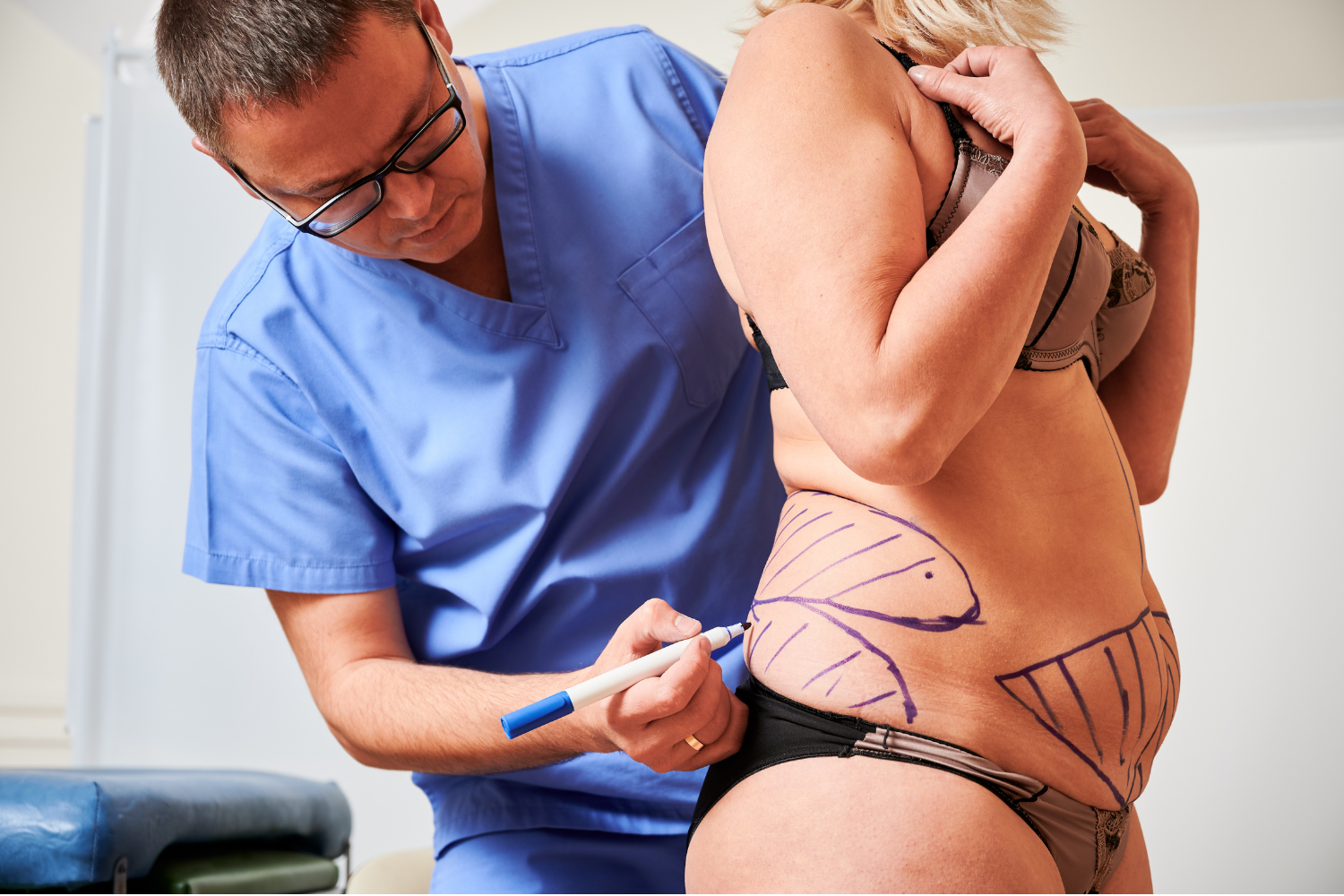Tips to take care of your post-operative drains
Proper care of surgical drains is essential to prevent infections and ensure effective recovery. This blog explains how to clean them, empty them and monitor the fluid, as well as identifying warning signs and adapting care according to the type of surgery.

After surgery, proper drain care is key to preventing infection and helping the wound heal properly. Keeping drains clean, emptying them regularly and controlling the amount of fluid are essential actions for good recovery.
Patients should learn how to manage their drain at home, including how to empty it, clean it, and record the amount of fluid that comes out. It's also important to watch for signs of problems, such as redness or excessive pain around the drain site. This guide shows practical steps to make the process simple and efficient.
Knowing what types of drains exist and how to care for them helps avoid complications and speeds up recovery. By following basic recommendations, anyone can handle their drain with confidence and lower the risk of infections or blockages.
Key Points
- The control and cleaning of the drain are essential for recovery.
- Recording and observing the liquid helps detect potential problems.
- Follow clear instructions, avoid complications and improve post-operative health.
Fundamental Aspects of Surgical Drain Care
Proper care of surgical drains is essential to prevent infections, control fluid accumulation and promote recovery. It is key to understand the function of each type of drainage and its use in different procedures, since this improves postoperative management and ensures a better patient evolution.
Importance of drains after surgery
Surgical drains allow for the evacuation of fluids such as blood, pus, or serous fluid that builds up after surgery. This removal reduces the risk of infections and decreases pressure on the wound, which in turn reduces pain and promotes healing.
In addition, drainage facilitates the early detection of complications, such as bleeding or fluid leakage. Its careful use helps to avoid deficiencies and other problems that can prolong the hospital stay.
Types of surgical drains used
There are several types of drains, classified according to their mechanism and location.
- Liabilities: They work by gravity or capillarity.
- Assets: They use suction to extract fluids.
Each one has characteristics that make it suitable for different post-operative areas and needs.
Role of drains in procedures such as mastectomy
In mastectomies, drains are key to removing blood and lymph, preventing the formation of seromas. They are usually placed at the end of surgery and are kept for several days.
These drains prevent complications such as infections and fluid accumulation that can delay healing. Constant care of the insertion site and monitoring of the volume and appearance of the drained fluid are essential to ensure optimal recovery after mastectomy.
Proper management decreases the risk of prolonged hospitalizations and improves the patient's quality of life.
Essential Steps for Daily Drainage Management
Daily surgical drain care requires precise attention to prevent infection and ensure effective drainage. Cleaning the insertion site, properly changing the dressing, and monitoring the fluid are key tasks to facilitate recovery.
Proper cleaning of the drain site
The area where the drain is inserted must be kept clean and dry to avoid infection. It is recommended to clean around the tube with mild saline or antiseptic solution at least once a day or as directed by a doctor. It's crucial to keep the area from getting wet or contaminated.
The patient or caregiver must wear disposable gloves during cleaning. In addition, you should never pull or pull the tube, as this can cause damage or loosen the drain. Cleaning should be done with gentle movements, without strongly rubbing the insertion site.
Changing and handling sterile gauze bandages
The bandage should be changed daily and whenever it is wet or dirty. It is important to use sterile gauze to cover the insertion site and protect it from bacteria and dirt.
Before changing the bandage, you should wash your hands thoroughly. You should carefully remove the old bandage, observe the skin around the drain and place a new one without tightening too much. The dressing should be kept fixed but comfortable to prevent the drain from accidentally moving or peeling off.
Recording and monitoring of drained fluid
Measuring the amount of fluid drained is essential to evaluate recovery. The content must be recorded according to medical indications, either in milliliters or in another convenient unit.
The liquid must be observed for its color, smell, consistency and quantity. Changes in these characteristics may indicate infections or complications. The collection container should always be kept below the wound level to promote flow and prevent backflow. All relevant data must be reported to the health team for follow-up.
Preventing and Detecting Common Complications
Proper surgical drain care is vital to avoid problems. Clear signs should be seen to detect infections, check that the drain works well, and respond quickly if there is pain or redness around the site.
Identifying infections and warning signs
Infection is one of the most common risks. The area where the drain was inserted should be checked for signs such as severe redness, swelling, warmth in the area, and purulent discharge.
It's also important to control a fever, as it can indicate internal infection.
If the drained fluid changes color, becomes cloudy, or smells bad, it's a sign of infection.
The patient should report these symptoms immediately to avoid serious complications.
Troubleshooting: Leaks, Clogs, and Suction
Leaks around the drain may indicate poor fixation or damage to the device. It should be verified that the drain is well anchored to the skin and that the dressing is dry and clean.
A blockage prevents fluid from flowing out, increasing the risk of infection or inflammation. It is essential to check the tube regularly and avoid tugs or kinks.
In active drains, it must be confirmed that the suction is working properly. Loss of pressure can cause fluid buildup and delay healing.
How to deal with pain or redness
Mild pain is normal, but a sudden or constant increase can be serious. Progressive redness near the drain is also a warning sign.
It is recommended to inform the medical team of any severe discomfort. The drain should not be manipulated or moved to relieve pain, as it can cause damage.
Keeping the area clean and dry helps reduce inflammation. In some cases, the doctor may prescribe pain relievers or antibiotics to control symptoms and prevent infections.
Specific Tips and Advanced Care for Drain Types
Postoperative care varies depending on the type of drainage and the surgery performed. It is essential to know how to handle each type to avoid infections, ensure the correct evacuation of fluids and promote proper healing.
Penrose Drainage Care
The Penrose drain is a flexible, open tube that allows the passive exit of liquids by gravity. The insertion area should be kept clean and dry to avoid infection.
The bandage needs to be changed daily or if it is wet. The wound around the drain should be checked for signs of inflammation, such as redness or warmth.
The patient should avoid sudden movements that could displace the drain. In addition, you should never pull the catheter to prevent tissue damage. If the drain becomes clogged, it's important to let your health care professional know right away.
Recommendations after a mastectomy
After a mastectomy, the drains are usually active and are connected to aspiration systems. It is crucial to monitor the volume and color of the fluid each day to detect possible complications.
The drainage area should be cleaned with antiseptic solution as directed and the bandages should be changed carefully to maintain sterility.
The patient should avoid lifting weights and movements that strain the operated area. It's also important to keep your arm elevated to reduce swelling and promote drainage.
At all times, it must be ensured that the tubes are not bent or disconnected, as this may affect the function of the drain.
Additional care depending on the type of surgery
Each surgery may require specific drainage management. For example, in abdominal interventions, it is essential to avoid fluid accumulation to prevent internal infections.
It is recommended to check the permeability of the tube and the correct operation of the vacuum system for active drains. The container must be emptied with gloves and following aseptic rules.
In orthopedic surgery, drainage care also focuses on preventing blood accumulation and reducing the risk of bruising.
The professional should instruct the patient about the importance of not manipulating the drain without supervision and to report signs such as fever, severe pain or increased discharge.
Frequently Asked Questions
Caring for surgical drains requires precise attention to prevent infection and facilitate healing. It is essential to maintain cleanliness, control the amount and color of the fluid, and handle the equipment correctly for a good postoperative result.
What are the indications for the proper management of surgical drains?
The patient should avoid pulling the drain and keep the area clean and dry. It is important to follow medical instructions to empty the reservoir regularly and report any signs of infection or damage.
How do you clean and care for a post-operative drain?
It is recommended to wash your hands before and after handling the drain. The skin around the site should be cleaned carefully using recommended solutions, avoiding wetting the area excessively to prevent infection.
What aspects should be considered when monitoring the color of the fluid in a surgical drain?
The fluid is usually clear to reddish in the first few days. Changes to a dark, cloudy, or foul-smelling color may indicate infection or complications, and should be reported to a doctor.
When should the removal of a surgical drain be considered?
The drain is removed when the amount of fluid decreases significantly or disappears, as medically evaluated. You should never attempt to retire on your own to avoid risks.
What types of drains are commonly used in surgery and what are their differences?
Drains can be open, such as the Penrose drain, or closed with suction, such as the Jackson-Pratt or Hemovac. Closed ones reduce the risk of infection and make it possible to measure the volume of liquid.
How should a wound drainage reservoir be emptied and maintained?
The reservoir should be emptied several times a day, as indicated, tightening the cover to maintain suction. It should always be done with clean hands and properly dispose of the liquid to avoid contamination.
Care at home is also part of a well-done surgery
Proper management of surgical drains is key to an uncomplicated recovery with optimal aesthetic results. Beyond the operating room technique, a good post-operative experience depends on clear information, close support and trust between patient and medical team.
With Dr. Antonio García Rodríguez, every stage of the process—including home care—is carefully guided. From day one to your final recovery, you will have precise guidance, personalized monitoring and a team attentive to every detail of your well-being.
Your recovery deserves the same quality as your surgery. Schedule a consultation and live a complete, safe and humane surgical experience.



